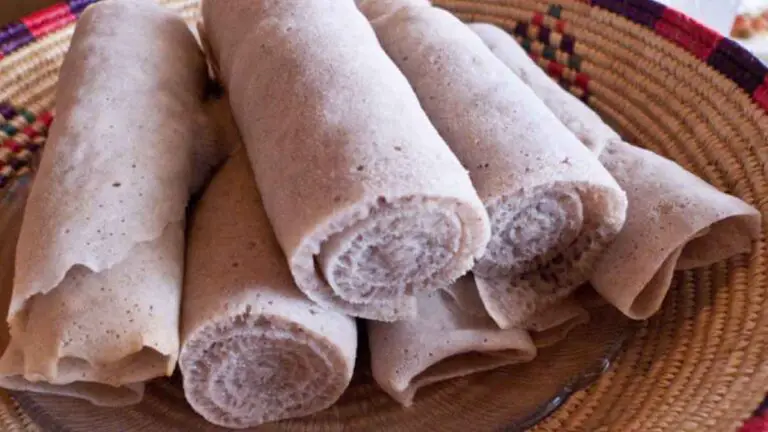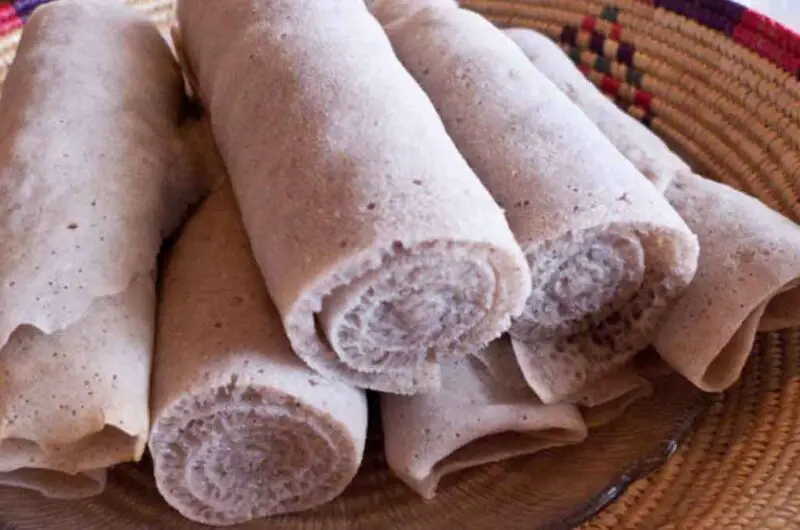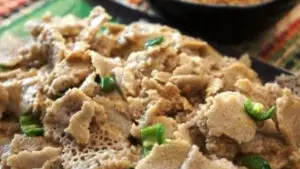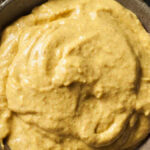Injera is an incredibly unique and ancient food that has been enjoyed for centuries in Ethiopia. It is a spongy, flatbread that is made from teff flour, a gluten-free grain native to Ethiopia and Eritrea.
Not only is Injera delicious, but it’s also incredibly nutritious due to its high nutrient content. It is an essential component of the country’s cuisine. Injera serves as both an accompaniment to meals and as an edible plate, as it can be used to scoop up meats, vegetables, and sauces.
Injera plays an important role in Ethiopian culture, not only as the primary staple food but also as an integral part of the daily life of most Ethiopians, within and outside of the country.
Ingredients Required to Make Injera
- ¾ cup teff flour
- 1 cup water
- 1 tsp vegetable oil
- 3 tbsp teff flour, if required
- 3 tbsp water, if required
How to Make Injera (Step-by-Step Tutorial)
- Start by mixing the teff flour and water and whisk together thoroughly in a large enough bowl.
- Transfer the mix to a large container that can hold at least 3 folds of the original mix, then cover with a clean and breathable cloth.
- Leave the batter while still covered for 24 hrs, stirring it well for a few minutes every 8 hrs.
- After 24 hours, check to see if the batter has increased in volume, if there are any bubbles, and if it smells a bit sour & tangy.
- If so, add 1 tbsp teff flour along with 1 tbsp water and whisk the batter thoroughly, then leave it for a few more hours.
- Check again after a few hours. If the bubbles have formed again, if the volume of the batter has increased again, and if the sour smell is still there, then skip to baking the injera.
- On the other hand, if these signs are not there within the previous 24 hours, leave the batter for 12 more hours, stirring it one time 6 hrs. in.
- Then, mix the 2 tbsp teff flour and 2 tbsp water together in a bowl, making sure that there are no lumps in the mixture. Add this mixture to the batter whisking thoroughly and leave it for a few hours.
- When you check in again, you should see the 3 signs mentioned above. Now the batter is ready to be baked.
- Next, grease your injera maker by adding oil and set it to medium heat. Now carefully and steadily pour the batter onto the injera maker in a circular motion outside-in. Make sure that there are no gaps in the middle of the injera, and that the batter is spread thinly and evenly on your injera maker.
- Cover the injera maker and let the injera bake for about 2 – 3 min.
- Transfer the baked injera onto a large-enough plate and cover it with clean kitchen plastic to keep it warm – while you continue making more injera until you finish your batter.
Equipment Recommendations to Make Injera
Affiliate Disclaimer: As an affiliate, we get commissions for purchases made through links on this website from Amazon and other third parties.












